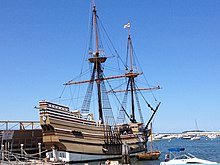After taking steps to identify potential Civil War veterans in my hubby's family tree, I found 21 likely possibilities to investigate.
I used Ancestry's Civil War collections,
Family Search records for Massachusetts, state records, newspaper databases, city directories, and other sources to get a better picture of these ancestors' lives.
One by one, I'm writing about these ancestors for a family history booklet for the grandsons who are riveted by the Ken Burns
Civil War documentary.
My first ancestor of focus was a teenager from the Wood branch of the family tree.
Thomas F. Wood of New Bedford
Thomas F.
Wood (1843-1925) was my husband's 1st cousin, twice removed. He was born and buried in the whaling center of New Bedford, Massachusetts.
 |
Pvt Thomas F. Wood
Civil War documentation |
The son of tinplate worker Isaiah Wood and Mary T. White, Thomas also became a tinplate worker during his teenage years. When the Civil War erupted, Thomas took up arms (with his parents' permission, as shown on the documentation at right).
Private Thomas F. Wood of the Militia
Searching local newspapers of the time, I found Thomas listed as a private in a local volunteer militia group called the New Bedford City Guards.
This militia was soon recruited into the Union Army for a
nine-month enlistment. Thomas joined Company E of the Massachusetts 3d Infantry Regiment. He was mustered in on September 23, 1862 at
Camp Joe Hooker, Lakeville, Mass, 20 miles north of his home in New Bedford. (This camp, named for
"Fighting Joe" Hooker, even had its own
newspaper, the Camp Gazette!)
Civil War Service in the Mass 3d Infantry Regiment
Thomas and his fellow soldiers were moved further north to Boston, where they boarded steamers and disembarked days later at New Bern, North Carolina. His regiment made several expeditions in the area, including
Foster's Expedition to Goldsboro, North Carolina in December of 1862. This operation successfully burned down a bridge to disrupt key supply lines of the Confederacy.
In April of 1863, Thomas and his regiment helped to provide relief to Union Army troops at Little Washington, North Carolina. According to another
Union soldier's diary of the time, the massed Union forces engaged with the Confederate Army on April 9, 1863 and used artillery to push back the Southern troops.
Thomas was mustered out of the 3d Regiment on June 26, 1863, again at Camp Hooker in Lakeville, Massachusetts. But that wasn't the end of his Civil War service.
 |
Civil War Pension Card for Thomas F. Wood
of New Bedford, Massachusetts |
Civil War Service in the 15th Unattached Company
Thirteen months after Thomas left the 3d Mass Infantry Regiment, he enlisted as a sergeant in the
15th Unattached Company. This 100-day enlistment began on July 29, 1864. He was mustered out on November 5, 1864.
Sgt. Wood served with the 15th at
Fort Warren on George's Island, an important post guarding the entrance to Boston Harbor.
Post-War Life
After his military service, Thomas returned to civilian life. In the 1865 Massachusetts Census, he was again a tinplate worker, living at home with his parents. He married Ellen L.
Dean in 1868.
Changing his career with the times, Thomas became a steam and gas fitter (according to 1900 Census). His Civil War pension card indicates that he filed for invalid status in 1905.
In his 60s, he was a partner in a steam factory (1910 Census). He did not list any occupation in the 1920 Census, when in his mid-70s, but he did say he owned his New Bedford home "free"--without a mortgage.
After Thomas's death in April of 1925, his widow Ellen L.
Dean Wood received his Civil War pension until she died on July 1, 1926. Her death date was shown in the city directory of New Bedford, Massachusetts (see below).
 |
From 1926 City Directory of
New Bedford, MA |



























